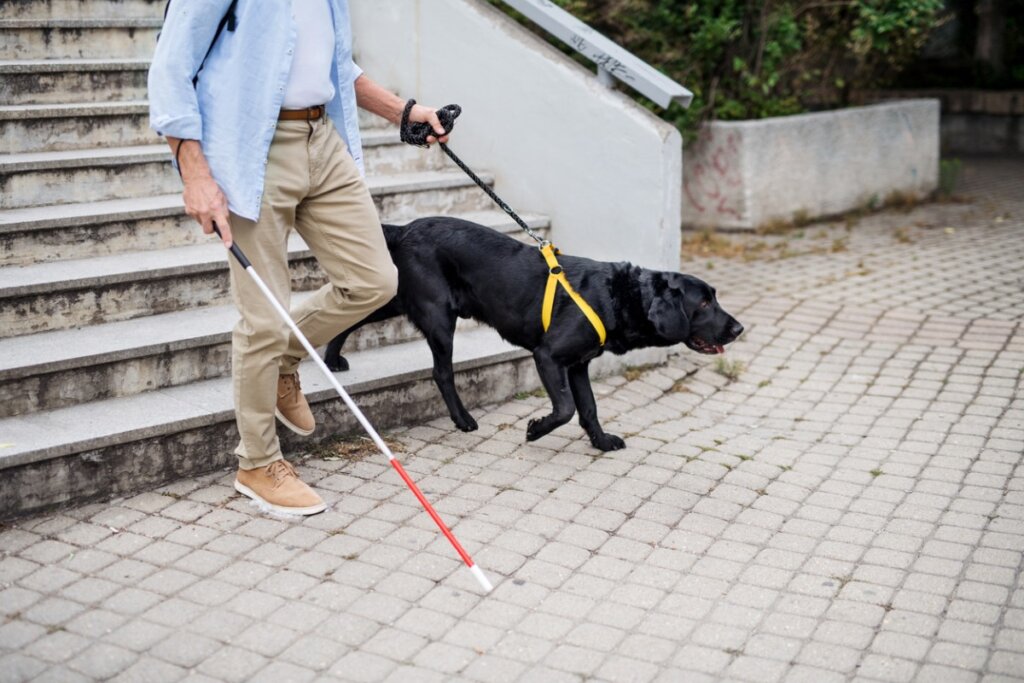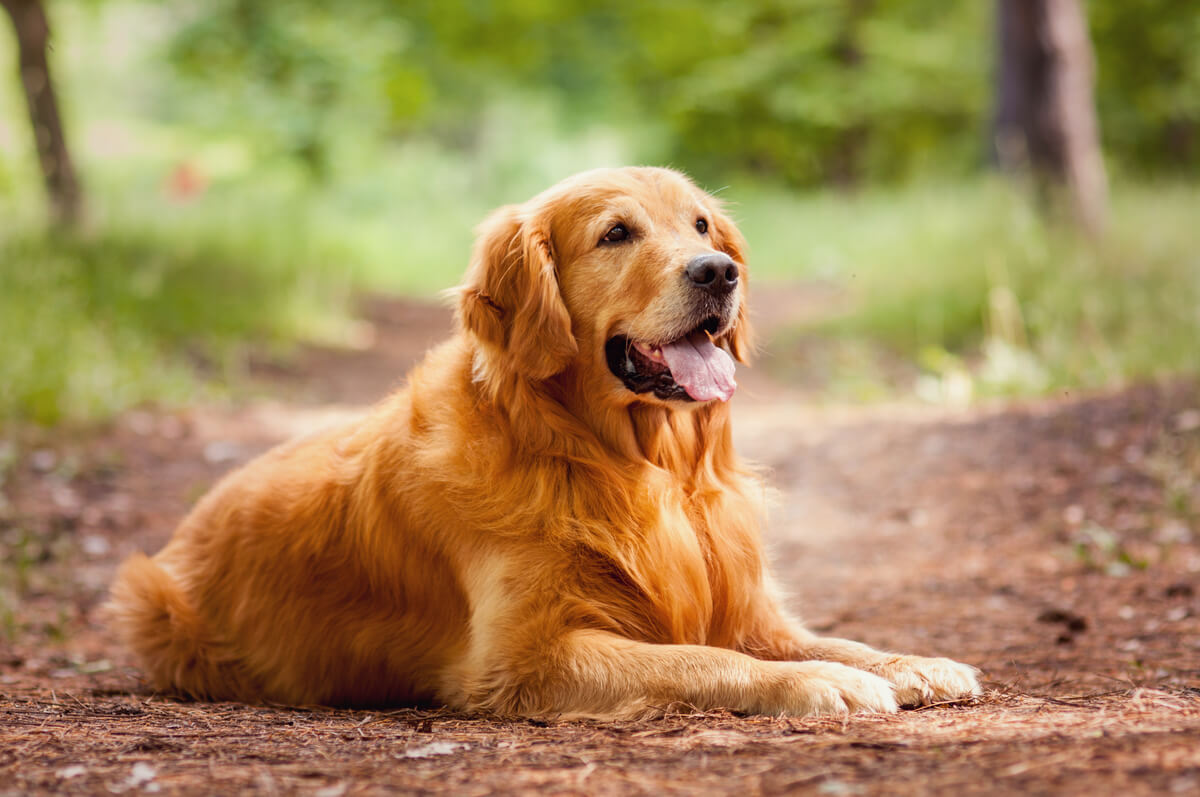Guide Dog Training: How to Carry It Out

Guide dogs really do become the eyes of the visually impaired. These dogs are trained to lead their human past obstacles on the public road, and even to disobey an order if it poses a danger to him. Here’s a fascinating insight into guide dog training.
These dogs are so good at their job that, for anyone unfamiliar with their training, they can surprise us and raise questions at the same time. How do they get to such a point of effectiveness? Here you can learn about the entire process they go through from birth to “graduation”.
History of guide dogs
The first systematic attempt to train dogs to help visually impaired people occurred in Paris in 1780. Later, during the First World War, Gerhard Stalling decided to train dogs to help all the soldiers, who returned blinded by toxic gases from the camp of battle.
Around the same time, American Dorothy Harrison Eustis, who was already training working dogs for the police and military, joined the guide dog movement. The intervention of this woman was what would launch the use of guide dogs on the international scene.
Since then, guide dog schools have multiplied across the globe. Thousands of people have had their lives transformed thanks to guide dogs, increasingly improving in mobility and autonomy as time progresses.

What is guide dog training like?
Training begins from “puppyhood”. This process follows a series of stages:
- Foster home: The dog spends a year learning all the basics of what it means to be a dog, and, at the same time, it gets used to socializing and being around people.
- 4 months old: It begins its training in basic guide dog tasks, while working on overriding hunting and protective instincts.
- 8 months old: Hunter and territorial instincts are reassessed to verify that they have been eliminated.
- One year of life: The dog enters the second training cycle, this time a more advanced one, where it will be definitively evaluated to see if meets the necessary skills to guide a blind person.
- Trial period: Once assigned to a human, the performance of their duties is evaluated for 3 weeks. If the result is positive, the dog is considered suitable to be a guide dog.
- A guide dog has approximately 7 to 8 years of active life; it then retires and can be adopted.
Keys to guide dog training
In the training mentioned above, a series of essential elements are taken into account, without which this training wouldn’t be effective. You have them below:
- Use of the harness: The harness is the link between the dog and the human. The dog must get used to carrying it, as the metal handle can be annoying for it at first.
- Walk in a straight line: Although it may seem obvious, this is the first thing that a guide dog is taught. They mustn’t get distracted by external stimuli when they walk from one point to another.
- Going up and down curbs: Slopes are especially dangerous for a person who can’t see. The dog learns to stop at any curb to warn its owner that there’s about to be a change in the height of the terrain.
- Dodging obstacles: This is the most complex part of training. The dog will learn how to overcome obstacles, showing the way to its guardian at a certain distance from him or her.
- Pedestrian traffic regulations: It’s essential that the dog knows that it must stop whenever there are vehicles nearby, such as at traffic lights or zebra crossings. In addition, it’ll learn to stop whenever there’s a risk of being run over.
Guide dog characteristics
Not all dogs are suitable to become guides. To ensure the safety of both dog and human, there are a series of strict requirements that we’ll detail below:
- Being of a suitable size: The dog must weigh between 28 and 45 kilos.
- Being emotionally and psychically balanced.
- Having strong personality traits, among them, obedience, discipline, intelligence, and calmness.
- Being submissive.
- Having a robust physical health: It mustn’t suffer from bone, cardiovascular or respiratory problems, as well as allergies and other complications that may compromise its integrity and performance.
- Being awake and mentally active, with good learning ability.
- Having a sociable and human-friendly character.
Not all breeds are suitable to become guide dogs. The 3 most used are the German Shepherd, the Labrador, and the Golden Retriever. The former, however, is less and less selected, due to its strong guarding and herding instincts.
How do you get a guide dog?
The dog isn’t the only one that has needs certain requirements to become a human’s guide. The person who adopts it as an assistant must be able to easily use the stick and have a good level of orientation. The dog isn’t a GPS (!) – it’s guided by the indications of the blind person.
In addition to this, the person must have the appropriate psychophysical faculties to handle the dog and take responsibility for looking after it. Likewise, the person must be able to afford the maintenance costs of the animal.

Depending on the country where it’s requested, some details may vary. In any case, the work of these dogs will be commendable wherever they are: there often isn’t enough gratitude for an animal that devotes its life to helping a human without having been asked to do so.
All cited sources were thoroughly reviewed by our team to ensure their quality, reliability, currency, and validity. The bibliography of this article was considered reliable and of academic or scientific accuracy.
- Fundación ONCE del Perro-Guía. (2021). Fundación ONCE del Perro Guía. https://perrosguia.once.es/es
- Jakovcevic, A., & Bentosela, M. (2009). Diferencias individuales en los perros domésticos (Canis familiaris): revisión de las evaluaciones conductuales. Interdisciplinaria, 26(1), 49-76.
- ¿Cómo se entrenan? (2021). Perros Guía. https://www.perrosguia.org.mx/comoseentrenan